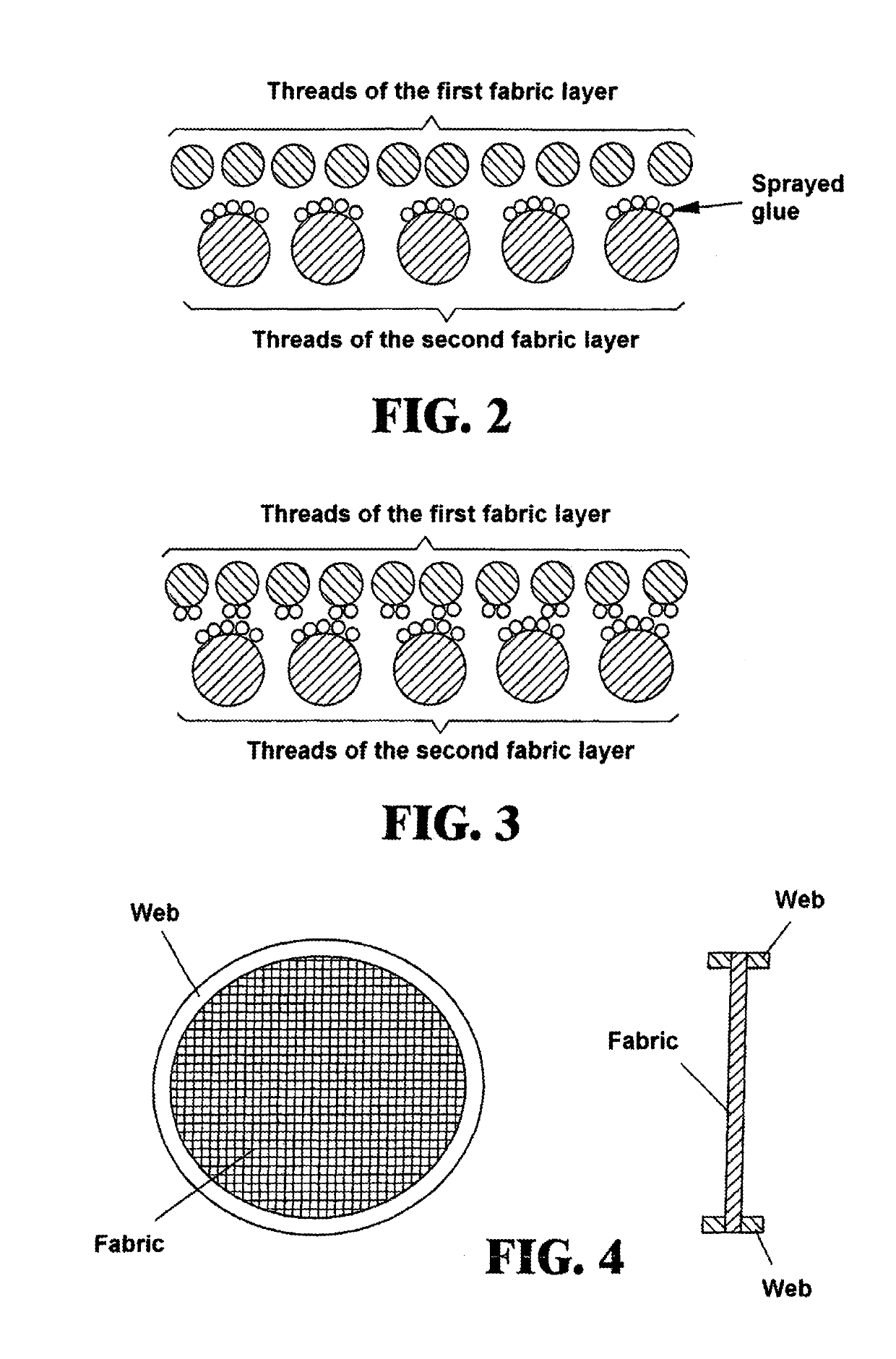Method for making a multilayer textile structure for protecting acoustic devices, method for making a component for protecting acoustic devices by the multilayer textile structure and the obtained acoustic device protecting component
- Summary
- Abstract
- Description
- Claims
- Application Information
AI Technical Summary
Benefits of technology
Problems solved by technology
Method used
Image
Examples
Embodiment Construction
[0091]From the above disclosure it should be apparent that, in a first aspect, the present invention provides a synthetic monofilament two-layer textile fabric structure, having specifically designed or target geometrical, aesthetic, mechanical and acoustic properties, and including two overlapping layers coupled or laminated by a glue spraying method and a further laminating method, to be used in electronic consumer products as a protecting element for protecting electric-acoustic components, built-in in different size devices.
[0092]The above textile two-layer structure provides desired protection levels against an intrusion of particles and fluids while providing an acoustic attenuation level precisely corresponding to the designed one.
[0093]Said structure has very even mechanical, geometrical and functional properties, also in relation to the typical sizes of the pieces used in these applications. Said structure, moreover, owing to the very good adhesion properties thereof, may b...
PUM
| Property | Measurement | Unit |
|---|---|---|
| Length | aaaaa | aaaaa |
| Length | aaaaa | aaaaa |
| Length | aaaaa | aaaaa |
Abstract
Description
Claims
Application Information
 Login to View More
Login to View More - R&D
- Intellectual Property
- Life Sciences
- Materials
- Tech Scout
- Unparalleled Data Quality
- Higher Quality Content
- 60% Fewer Hallucinations
Browse by: Latest US Patents, China's latest patents, Technical Efficacy Thesaurus, Application Domain, Technology Topic, Popular Technical Reports.
© 2025 PatSnap. All rights reserved.Legal|Privacy policy|Modern Slavery Act Transparency Statement|Sitemap|About US| Contact US: help@patsnap.com


